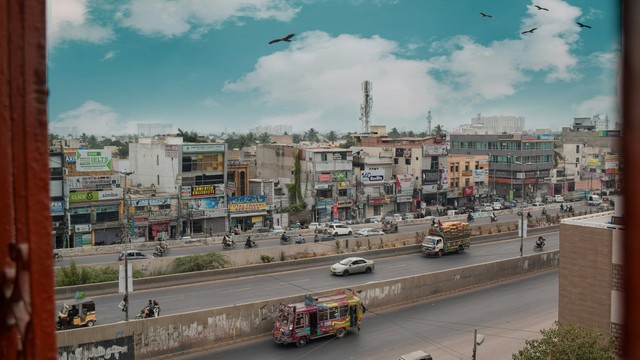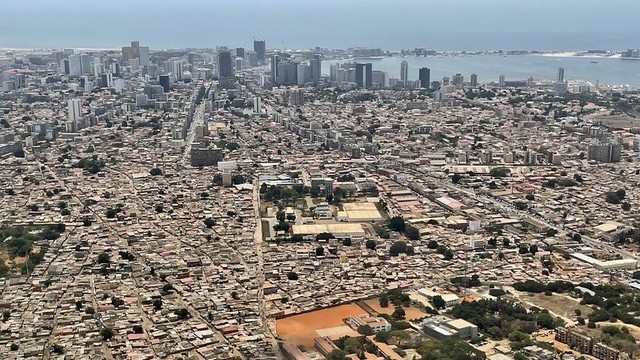Feeding all city inhabitants
Cecilia Tacoli explores how food and nutrition security in urban areas is often overlooked by policymakers and city governments.


Woman cooking at home in Kotwali, Dhaka Division, Bangladesh (Photo: Pslee99 via Flickr, CC BY-NC 2.0)
While on average urban residents are less likely to go hungry than rural residents, a large proportion of the urban poor suffer from food insecurity and malnutrition.
This is closely linked to low and irregular earnings, combined with inadequate housing and infrastructure, limited access to basic services and exposure to environmental hazards.
Hunger and malnutrition are increasing
After decades of decline, current estimates suggest that for the past three years the numbers of chronically malnourished people have grown to 821 million: that’s one in every nine people, with about two billion people experiencing moderate to severe food insecurity. Nearly 144 million children under the age of five are stunted, and 47 million are threatened by wasting as a result.
One of the most immediate and devastating impacts of the COVID-19 pandemic is how it affects access to nutritious diets, with large numbers of people relying on food parcels and food banks. The number of malnourished people may increase by over 130 million because of the pandemic.
Rates of obesity are growing
At the same time, overweight and obesity are growing in all regions of the world. It is currently estimated that at least 2.28 billion adults and children are overweight. These conditions often coexist with undernutrition in what has been defined as the double burden of malnutrition.
This emerging health crisis is concentrated in cities and affects especially low-income urban groups where households can include both overweight or obese adults, and underweight and stunted children.
Achieving the second Sustainable Development Goal of ending hunger, food insecurity and all forms of malnutrition by 2030 looks like an increasingly insurmountable challenge. And yet, there is enough food to feed 10 billion people, more than the world’s entire population.
So what is going wrong?
What is specific to urban food and nutrition insecurity?
Low and irregular incomes, often coupled with a vicious cycle of indebtedness, are the root causes of urban food insecurity. Urban residents have to purchase, as opposed to grow, the majority if not all their food, so any decline in income or rise in food prices often has devastating consequences.
The majority of urban workers in low- and middle-income nations earn their livelihoods in the informal economy, often as unskilled labourers on daily wages, so a day without work can easily mean a day without food for the household. The pandemic has shown how fragile the economy of the urban poor is in cities like Dhaka.
Even in non-COVID-19 times, many poor households do not have enough to eat at any given time – the poorer the household, the higher the proportion of income spent on food. Any reduction in earnings affects the quantity and quality of the food put on the table, with diets based on more energy-dense, nutrient-poor and often cheaper food.
Community leaders discussing their priorities in a previous blog, stressed the importance of eating greens.
It’s not only about income
But income poverty is only part of the picture. Inadequate and often expensive housing forces low-income people to share cramped accommodation, where they cook in the same room as they sleep. Lack of storage space and refrigeration is a severe constraint on buying food in bulk, at lower prices.
Eligibility to public safety nets such as food ration cards and poverty reduction programmes tends to require a legal city address. This is a major problem for the many residents of informal, low-income settlements. It is especially critical for the large numbers of migrants and refugees living in cities, as dramatically shown during the pandemic lockdowns.
Low-income settlements are also disproportionately exposed to environmental hazards as they are often built on cheap land prone to flooding, landslides and contamination. This, combined with inadequate or outright lack of basic infrastructure and waste management as well as exposure to climate change-induced extreme events such as floods and heatwaves, raises the incidence of communicable diseases such as diarrhoea and malaria.
This, in turn, affects nutrition as the body does not retain nutrients.
A self-perpetuating cycle affecting women
But chronic ill health also has deeply gendered implications. As the main carers and in the absence of childcare facilities, women may be forced to stay at home to look after their sick relatives.
But women’s earnings are often essential for the survival of urban poor households, and less money can mean less nutritious food and more illness, especially for children, in a self-perpetuating cycle where income poverty, insanitary living conditions and malnutrition reinforce each other.
Expanding the food and nutrition security agenda
After decades of food policies focusing solely on production, there is now growing attention on consumption, including the importance of access to markets and nutrition education. This is partly driven by the recognition that, with most of the world’s population living in urban centres, food insecurity and malnutrition are becoming recognised as urban concerns.
But food insecurity is deeply intertwined with the other multiple dimensions of urban poverty and to be effective, food policies need to address the wider agenda of poverty reduction, gender inequality and social exclusion.
We have many powerful case studies from which to learn. Previous blogs have shown that to understand urban food insecurity we need to ask the real experts, and highlighted key roles that community organisations have taken on during the pandemic.
These include community-led responses of the Philippines Homeless People’s Federation, Mahila Milan in Mumbai and community organisations in Dhaka that ensured food parcels were delivered to those in most need. The conversion of a former garbage dump into a thriving urban farm in Chiang Mai, Thailand is also inspiring.
But all these rely on long term political and financial support that is rarely forthcoming.



